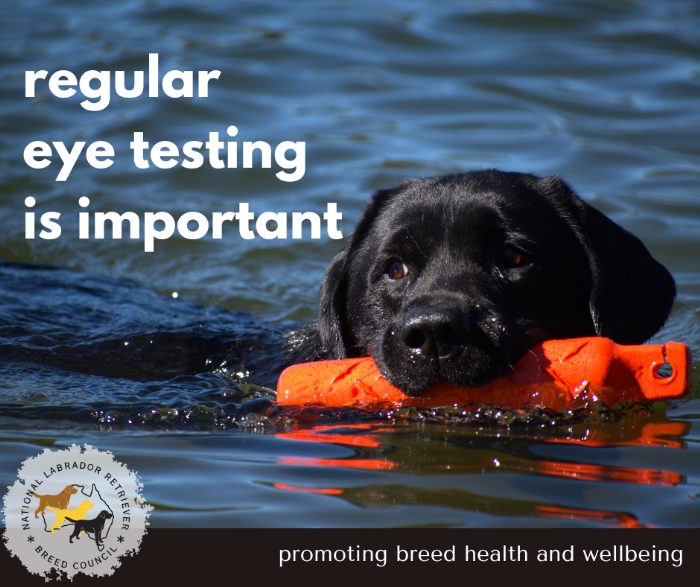Health Testing
The Need for Clinical Eye Testing in Labrador Retrievers

There are several inherited eye diseases that occur in Labrador Retrievers. Fortunately, three of these, including what was once a very wide spread disease in the breed, are inherited in a simple recessive fashion and have DNA tests available to indicate the presence of the mutation. However, there are at least two other inherited diseases that occur in Labradors for which there is no DNA test. There are also anomalies of the adnexa i.e. the area surrounding the eye ball.
It seems that many breeders are assuming that if they have had a DNA disease test done on their dog, that covers all possible eye issues – it doesn’t.
|
Progressive Rod Done Degeneration (prcd-PRA) |
covered by a DNA test |
|
Macular Corneal Dystrophy |
covered by a DNA test |
|
Stargardt’s Disease |
covered by a DNA test |
|
Hereditary Cataract |
requires clinical examination by an ophthalmologist under the Australian Canine Eye Scheme (ACES) |
|
Retinal Dysplasia |
requires clinical examination by an ophthalmologist under the Australian Canine Eye Scheme (ACES) |
|
Persistent Pupillary Membrane |
These four diseases are listed as “conditions under investigation” and require clinical examination by an Australian Canine Eye Scheme (ACES) ophthalmologist |
|
Congenital Hereditary Cataract |
|
|
Persistent Hyperplastic Primary Vitreous |
|
|
Optic Nerve Hypoplasia |
|
|
Entropion, Ectropion, Distichiasis, Abnormal Lacrimal Drainage, etc. |
These abnormalities of the surrounds of the eyeball require clinical examination by an Australian Canine Eye Scheme (ACES) ophthalmologist |
During the past twelve months, there have been 1982 dogs’ ACES results entered on the ORCHID database – of these, only 113 are Dogs Australia registered Labrador Retrievers. Amongst this very small number of Labradors, there have been cases of Hereditary Cataract and Retinal Dysplasia diagnosed. There would be many more cases if more breeders tested their breeding stock under the Australian Canine Eye Scheme.
